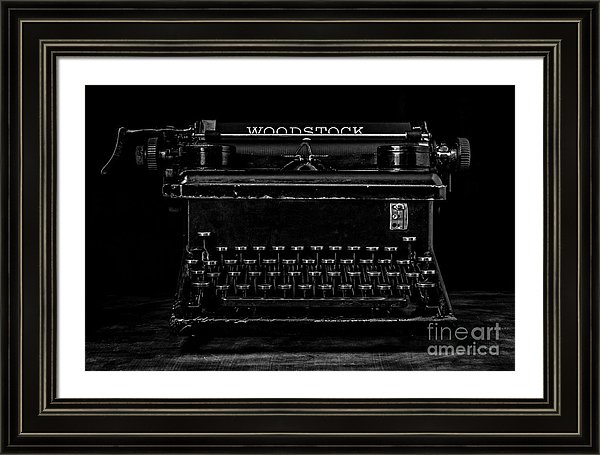
Available as a print rolled in a tube for custom local framing or framed by our experts in one of hundreds of framing and matting combinations or as a canvas, acrylic, metal or wood print, “Old Typewriter Black And White Low Key Fine Art Photography” by fine art photographer Edward M. Fielding makes a stunning statement in your home or office.
Bring your print to life with hundreds of different frame and mat combinations. Our framed prints are assembled, packaged, and shipped by our expert framing staff and delivered “ready to hang” with pre-attached hanging wire, mounting hooks, and nails.
The concept of a typewriter dates back at least to 1714, when Englishman Henry Mill filed a vaguely-worded patent for “an artificial machine or method for the impressing or transcribing of letters singly or progressively one after another.”
But the first typewriter proven to have worked was built by the Italian Pellegrino Turri in 1808 for his blind friend Countess Carolina Fantoni da Fivizzano; unfortunately, we do not know what the machine looked like, but we do have specimens of letters written by the Countess on it. (For details, see Michael Adler’s excellent 1973 book The Writing Machine. Carey Wallace’s 2010 novel The Blind Contessa’s New Machine is based on the relationship between the Countess and Turri.)
Typewriters of this type were the word processors of the day and were found in every office and every up scale home. Today some writers and novelists still prefer to type out their books and letters using these reliable old mechanical machines with keys and ribbons of ink.
The photograph by Edward M. Fielding gives this old workhouse plenty of drama and weight using low key photography techniques in the studio.
Low-key lighting is a style of lighting for photography, film or television. It is a necessary element in creating a chiaroscuro effect. Low key light accentuates the contours of the subject by throwing areas into shade while a fill light or reflector may illuminate the shadow areas to control contrast.